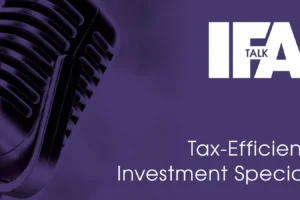A sudden turning point
At one point in early March, the economy appeared ready to continue growing despite a year of rapid interest rate hikes and market turmoil. The consensus was building that central banks—led by the US Federal Reserve (Fed)—would have to raise rates higher still to pull inflation back, but also that the economy was positioned to absorb it.
Then came news about Silicon Valley Bank and, shortly afterwards, Credit Suisse. Suddenly, fixed income markets were pulled into a multi-verse of runs on bank deposits, bank failures and emergency central bank meetings worldwide.
The 2-year US Treasury yield completed a 119-basis-point (bps) drop in just three days, its sharpest decline since 1987 . Eurodollar futures contracts saw the largest one-day price swing in their history, surpassing the previous record set the day Lehman Brothers failed in September 2008.
Each day’s news cycle seemed like a jump into a new reality. Credit Suisse was forced to sell itself to UBS, a corollary of which was the wipeout of Credit Suisse’s additional tier 1 (AT1) bonds. Bank deposit guarantees were issued in the US for banks and a surge in borrowing at the Fed’s discount window soon followed.
The inflation fight resumes, but with higher risk Despite the events of March, we are confident that regulators have reduced the risk of another global financial crisis and that the Fed—as well as other major central banks— are likely to provide liquidity when financial stability is needed.
However, two things have become clear to us. First, we are reaffirmed in our belief that a recession will start in 2023, as bank lending should now contract faster than we previously expected. While the higher interest rate environment is generally positive for profitability in the sector, the sharp increase in rates we have seen will likely exert asset-quality pressures on the banking sector. This will potentially lead to tightened lending standards, which in turn are likely to bring forward a recession and could also increase its depth.
Second, we now expect the Fed to be more cautious in its tightening path. The past few weeks included a number of policy pivots, starting with the Fed’s indication in early March of its willingness to revert to 50-bps hikes to the point where markets are now fully pricing in a recession by the end of the year. While core government bond markets outside the US have their own idiosyncratic drivers, we believe that the next 100 bps of interest rate changes in either direction from current levels by the European Central Bank (ECB) will be strongly dictated by developments in the US. The only certainty we have at the moment is that volatility
will remain elevated and every data point could swing the market heavily as liquidity has dried up and many active investors are sitting at the sidelines.
In the US, markets believe the hiking cycle is complete and multiple rate cuts are likely later this year. While a path to that outcome is possible, it’s not our base-case view. Core inflation remains persistent and probably won’t come down enough to allow for that much policy easing in the coming quarters.
We believe the Fed will ultimately hoist the fed funds rate above 5% by mid-year before pausing. Barring a major economic surprise, we think it will hold policy rates high for longer than the market currently expects. Whichever case unfolds, however, the higher yields that we entered the year with continue to help fixed income investors. They have cushioned the shocks and provided stability—as well as positive returns—to the fixed income universe.
In Europe, economic data came in stronger than expected across the board. While inflation pressures moderated at the headline level due to meaningful declines in energy costs, this has put more money in the pockets of consumers, which has kept core inflation strong. We’ve also seen a continued pick-up in wage negotiation increases and services activity metrics moved into very high levels. We believe that, absent a global recession, the European economy should continue to perform well and we should see tentative steps towards convergence between European and US government bond yields.
The UK has been steadily posting economic data above expectations, to the point where the market has moved from predicting six quarters of negative growth to now envisioning potentially no recession at all in the short term. The improved short-term outlook has supported sterling, which at the end of March was trading at its strongest level relative to the US dollar since June last year.
In Japan, the continued release of positive economic data has, in some respects, put the Bank of Japan (BoJ) in an awkward position. Inflation is running hotter in Japan than at any point in the last 30 years and—because of the BoJ’s yield-curve control (YCC) policy, 10-year Japanese government bonds (JGBs) are overvalued by at least 50bps, in our view. We’ve changed our perception from questioning whether the BoJ would change its YCC policy to now positioning ourselves for the resulting market reverberations when BoJ changes it. As things stand, we believe it is only a matter of time (months, in our view) before the BoJ acts – either out of its own will, or by having its hand forced by the market.















